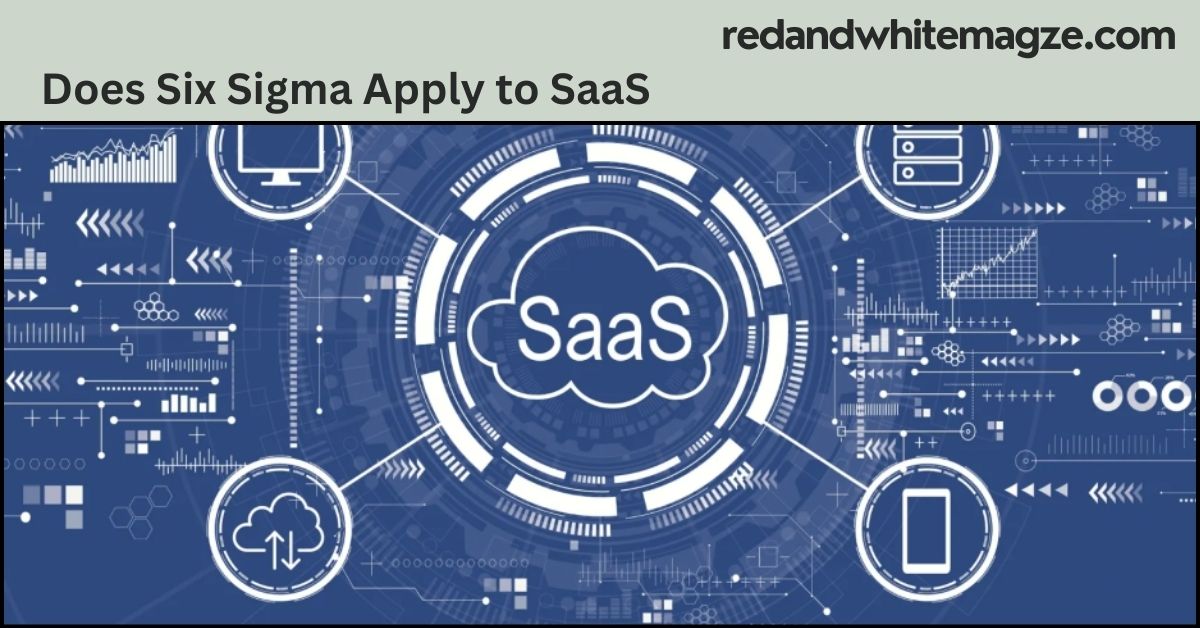Does Six Sigma Apply to SaaS? Unveiling the Potential
In the rapidly evolving world of Software as a Service (SaaS), businesses constantly seek ways to enhance performance, reduce inefficiencies, and maintain high levels of customer satisfaction. One approach that has stood the test of time across various industries is Six Sigma. But, does Six Sigma apply to SaaS? The answer is a resounding yes—but with certain adjustments to account for the unique aspects of SaaS.
In this article, we will explore the fundamentals of Six Sigma and SaaS, evaluate how Six Sigma can be implemented in the SaaS industry, and provide insights into making the most out of this methodology for better operational efficiency, improved customer experiences, and faster growth. Along the way, we’ll break things down into easy-to-understand steps to ensure that the concepts are accessible to everyone, especially those with limited knowledge of Six Sigma or SaaS.
What Is Six Sigma? A Simple Overview
Six Sigma is a data-driven methodology aimed at improving business processes by identifying and removing defects or inefficiencies. It focuses on minimizing variation and optimizing processes to achieve high levels of quality and consistency. The ultimate goal is to ensure that processes are as predictable and efficient as possible, reducing errors and wastage, and increasing customer satisfaction.

Six Sigma uses a well-known framework called DMAIC (Define, Measure, Analyze, Improve, Control) to identify areas for improvement, measure performance, analyze root causes, improve processes, and control the changes for sustained success.
What Is SaaS? Understanding the Basics
Before diving into the applicability of Six Sigma in the world of SaaS, let’s first understand what SaaS is. SaaS (Software as a Service) refers to cloud-based software applications that users can access and use over the internet. Unlike traditional software that requires installation on individual computers, SaaS applications are hosted and maintained on remote servers, typically by a third-party provider.
Popular examples of SaaS include platforms like Salesforce, Google Workspace, Slack, Zoom, and Shopify. SaaS is known for its scalability, cost-effectiveness, and ability to be accessed from anywhere, making it a popular choice for businesses of all sizes.
The Relationship Between Six Sigma and SaaS
Now that we have a grasp of both Six Sigma and SaaS, the next question is: does Six Sigma apply to SaaS? In short, yes, it absolutely does! SaaS companies face the same pressures as any other business: improving product quality, optimizing operations, reducing costs, and ensuring customer satisfaction. Six Sigma can be incredibly valuable in these areas, but it requires a tailored approach to address the specific needs and challenges of SaaS businesses.
Also Read: FintechZoom CRM Stock – Everything You Need to Know
Let’s break down how Six Sigma can be applied to SaaS.
1. Streamlining Development and Deployment Processes
In the SaaS industry, software development and deployment are critical to the product’s success. Inefficient processes or errors in code can result in slow product releases, poor user experiences, and even customer churn. Six Sigma can be leveraged to streamline development and deployment workflows through the DMAIC framework.
Define the Problem
Start by identifying pain points in the development process. Are there frequent bugs? Does deployment take longer than expected? Are there communication gaps between development and operations teams?
Measure and Analyze
Using data, measure key performance indicators (KPIs) like defect rates, time to deployment, and code quality. By analyzing these metrics, you can pinpoint areas for improvement.
Also Read: Purdue Lean Six Sigma Green Belt Case Study Notes: A Comprehensive Guide to Mastering the Process
Improve and Control
Once the problem areas are identified, implement changes to reduce errors and optimize deployment times. Use Six Sigma tools like process mapping and root cause analysis to tackle bottlenecks. Finally, maintain control through continuous monitoring and regular reviews.
2. Enhancing Customer Support and Satisfaction
For SaaS companies, customer satisfaction is paramount. Six Sigma can help improve customer support processes by reducing response times, increasing resolution rates, and enhancing overall service quality. A Six Sigma-driven approach can help identify the root causes of common customer complaints, such as long wait times, miscommunication, or lack of resources.
3. Reducing Churn and Improving Retention
Customer churn is a significant concern for any SaaS company. High churn rates can seriously damage the business, making retention efforts crucial. Six Sigma can help identify patterns and factors contributing to customer dissatisfaction, leading to more effective retention strategies. By understanding the reasons behind churn, companies can make data-driven decisions to improve user experience, provide better onboarding, and adjust features to meet customer needs.
4. Improving Operational Efficiency
Efficiency is a critical factor in the success of any SaaS business. Six Sigma methodologies can be applied to internal processes, such as billing, customer onboarding, and software updates, to identify inefficiencies and streamline operations. By continuously monitoring performance and applying Six Sigma tools, businesses can ensure that resources are being used optimally.
Also Read: Lean Six Sigma Project at Urgent Care Center: A Pathway to Operational Excellence
Key Challenges in Implementing Six Sigma in SaaS
While Six Sigma can bring tremendous value to SaaS businesses, it’s not without challenges. Here are some of the key obstacles to keep in mind when applying Six Sigma to SaaS:
1. Data Complexity
SaaS businesses rely heavily on data, but managing and analyzing this data can be overwhelming. Six Sigma requires a robust data collection and analysis process, which might be challenging for smaller SaaS companies that don’t have mature data infrastructure in place.
2. Fast-Paced Environment
The SaaS industry is fast-paced, with constant product updates and feature releases. Implementing Six Sigma can take time, and in a constantly changing environment, it can be difficult to maintain momentum and avoid disruption to ongoing operations.
3. Cultural Resistance
Adopting Six Sigma requires a shift in organizational culture, which can be met with resistance, especially in companies where employees are accustomed to traditional ways of working. This can make the transition to Six Sigma more challenging for SaaS businesses.
How to Overcome These Challenges
While the challenges are real, they’re not insurmountable. Here are some tips for overcoming them:
- Invest in Data Infrastructure: A solid data management system is essential for successful Six Sigma implementation. Use cloud-based analytics platforms to streamline data collection and analysis.
- Start Small: Instead of overhauling the entire business, begin by implementing Six Sigma in one department or process. This will allow you to refine the methodology before scaling it across the entire organization.
- Build a Supportive Culture: Engage employees at all levels to ensure they understand the benefits of Six Sigma. Encourage open communication, provide training, and involve staff in the process to ensure smoother implementation.
Also Read: Zoho Creator Blueprint and Kanban:A Comprehensive Guide
Six Sigma Tools That Can Benefit SaaS
Several Six Sigma tools and techniques are particularly useful for SaaS companies. Some of these include:
- Fishbone Diagram: Helps identify potential causes of problems in SaaS processes.
- Pareto Analysis: Focuses on identifying the 20% of issues causing 80% of the problems.
- SIPOC (Suppliers, Inputs, Process, Outputs, and Customers): Provides a high-level view of the process to understand key relationships and dependencies.
- Process Mapping: Visualizes processes to highlight inefficiencies and bottlenecks.
FAQs about Does Six Sigma Apply to SaaS?
What is Six Sigma, and why is it important for SaaS?
Six Sigma is a data-driven methodology for improving business processes. It helps SaaS companies identify inefficiencies, reduce errors, and improve customer satisfaction by enhancing operational efficiency and software quality.
How can Six Sigma improve customer support in SaaS?
Six Sigma can reduce response times, improve resolution rates, and enhance customer support by identifying the root causes of common issues, improving internal processes, and streamlining workflows.
What challenges should SaaS companies expect when implementing Six Sigma?
Challenges include data complexity, the fast-paced nature of SaaS, and cultural resistance to change. However, these challenges can be overcome with the right tools, a phased implementation approach, and strong employee buy-in.
Can Six Sigma be used to reduce churn in SaaS businesses?
Yes! By analyzing customer behavior and identifying the causes of dissatisfaction, Six Sigma can help reduce churn rates and improve customer retention through targeted interventions and process improvements.
What Six Sigma tools are best for SaaS companies?
Key tools include Fishbone Diagrams, Pareto Analysis, SIPOC, and Process Mapping. These tools help identify inefficiencies, analyze data, and map out processes to pinpoint areas for improvement.
Conclusion: Six Sigma for SaaS
In conclusion, does Six Sigma apply to SaaS? Absolutely! By implementing Six Sigma principles, SaaS companies can streamline operations, improve customer satisfaction, reduce errors, and drive growth. While there are challenges in applying Six Sigma to this fast-paced, data-driven industry, the rewards are well worth the effort.
With a customized approach and the right tools, SaaS businesses can leverage Six Sigma to not only stay competitive but also achieve long-term success. Whether you’re looking to optimize development processes, improve customer retention, or streamline operations, Six Sigma offers a proven framework for excellence in the SaaS industry.






